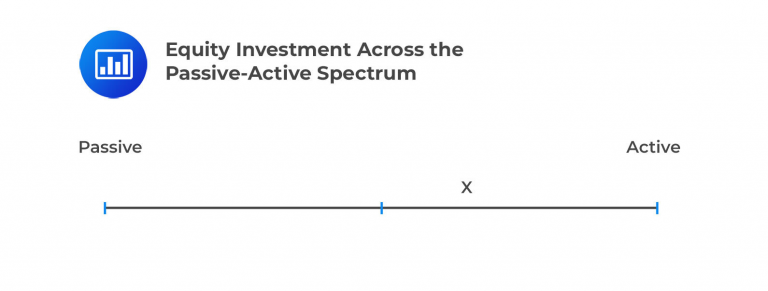Exchange Rates Forecasting
There are three principal ways in which trade goods and services can influence... Read More
The choice between managing a portfolio of equities passively or actively involves various minor decisions. The result is not strictly a binary yes-or-no answer. Instead, it can be viewed as a decision that falls along a spectrum. This decision-making process encompasses a range of options, and even the individual sub-criteria within it allow for considerable variation.

The following aspects help inform the active vs. passive decision:
Investors who have faith in active management are often willing to bear the additional costs it entails. Though there’s an ongoing debate about whether active management justifies these costs, specific clients hold strong confidence in their management teams and believe in the overall effectiveness of active management.
Both growth and value investing can be managed actively or passively. Growth investing is often associated with active management due to the need for in-depth analysis and trend identification. In contrast, value investing is more aligned with passive strategies which can involve replicating passive indexes to capture value opportunities.
Client-imposed constraints outlined in an Investment Policy Statement (IPS) can impact the management approach. For instance, if a minimum percentage of the portfolio must be invested in blue chip stocks, this favors passive strategies. Blue chip stocks usually trade in efficient markets due to their size, stability, and extensive analyst coverage.
Furthermore, Environmental, Social, and Governance (ESG) constraints tend to favor active strategies. Meeting specific ESG criteria, such as a minimum annual carbon emission threshold, requires additional analysis and may lead to active stock selection.
As explained earlier, active management tends to incur higher costs and offers less predictable performance. Portfolio managers adopting active strategies face the following risks:
Question
Security correlations and market volatility most likely have the following relationship:
- Inverse.
- Positive.
- Mostly stable.
Solution
The correct answer is B:
Competition among securities rises during market crises, dampening the diversification benefit.
When markets experience panic, and numerous security prices decline, they become more closely correlated as they all tend to drop simultaneously. Therefore, both volatility and correlations rise concurrently, indicating a positive relationship.
A is incorrect. An inverse relationship would mean that as one variable goes up, the other goes down, and vice versa. This does not accurately describe the relationship between security correlations and market volatility in the context mentioned above.
C is incorrect. It doesn’t capture the dynamic relationship between security correlations and market volatility, as it suggests a constant or unchanging relationship, which is not the case.
Portfolio Construction: Learning Module 1: Overview of Equity Portfolio Management; Los 1(e) Describe rationales for equity investment across the passive–active spectrum
Get Ahead on Your Study Prep This Cyber Monday! Save 35% on all CFA® and FRM® Unlimited Packages. Use code CYBERMONDAY at checkout. Offer ends Dec 1st.